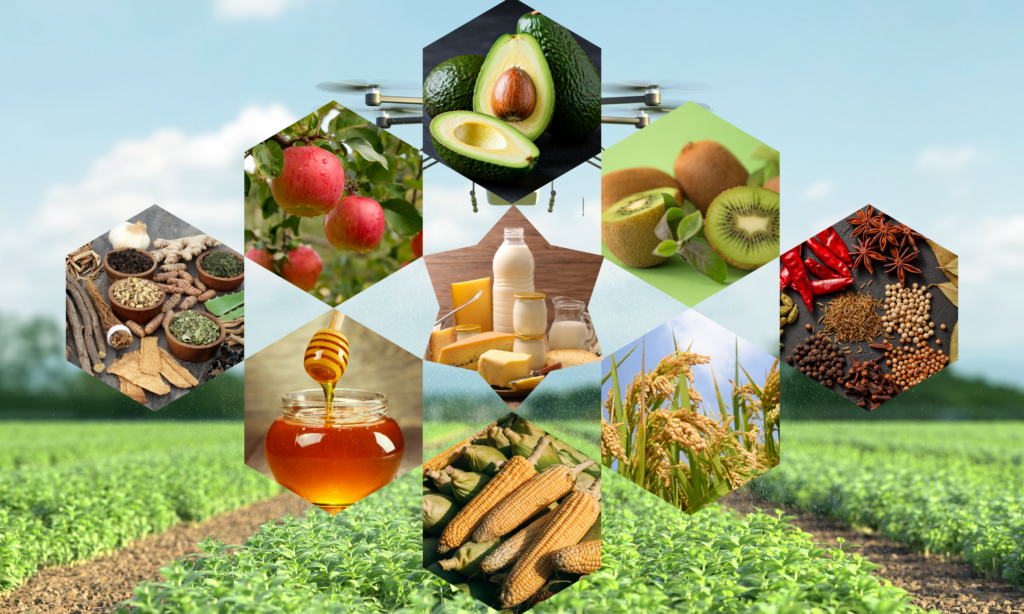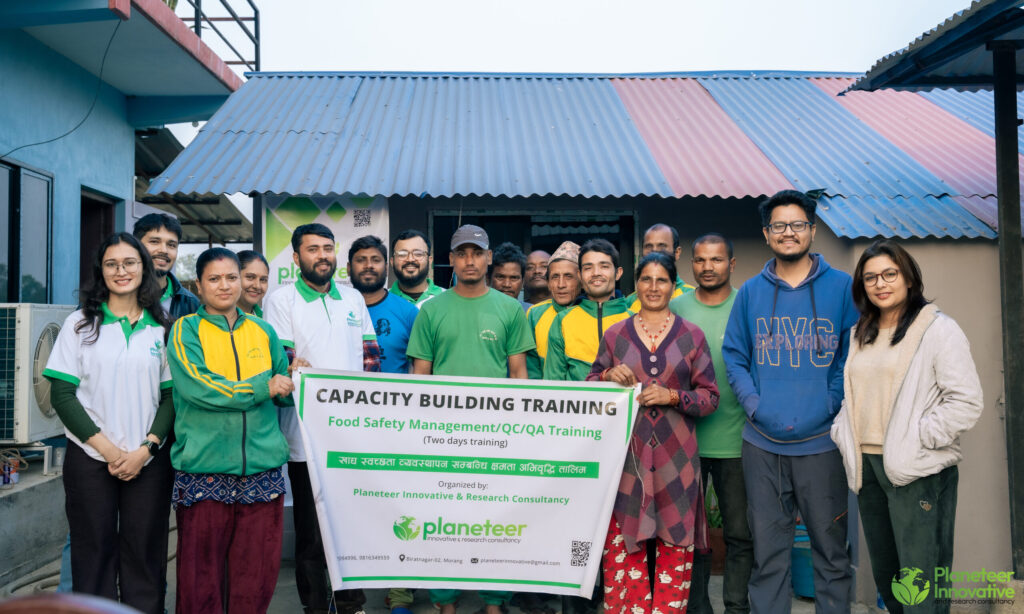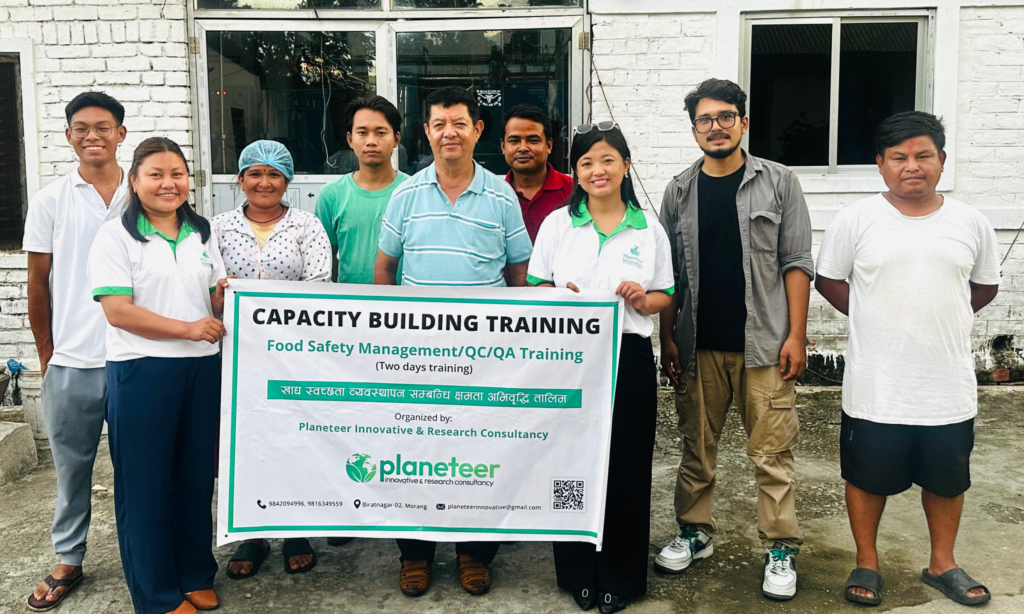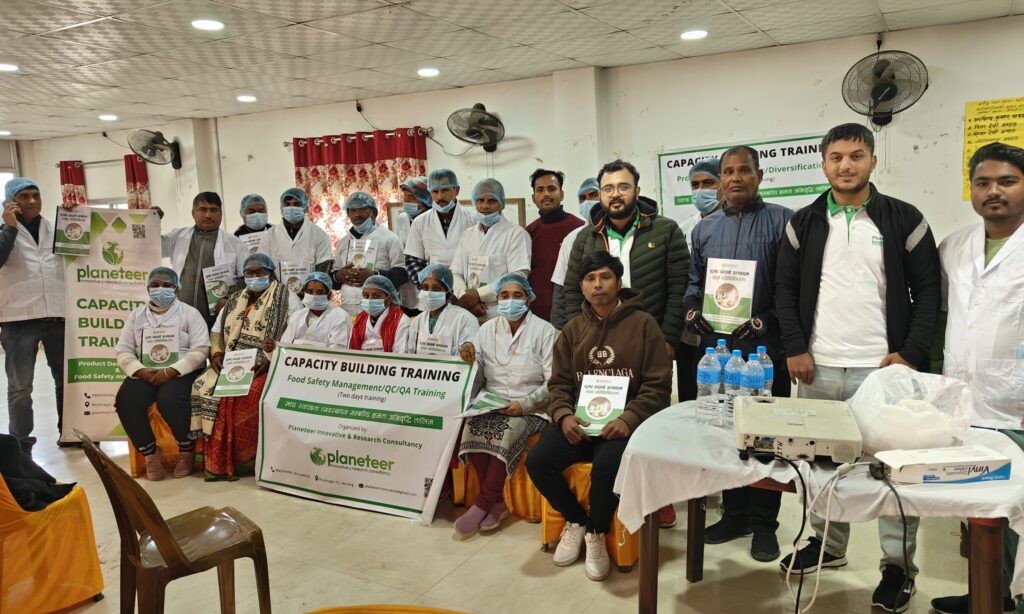Agriculture has always been the backbone of Nepal’s economy. From the fertile plains of Terai to the mid-hills and high Himalayas, farming is not only a way of life but also the largest source of livelihood. According to the Central Bureau of Statistics (CBS, 2023), nearly 62% of Nepal’s population is engaged in agriculture either directly or indirectly and the sector contributes around 23% to the national GDP.
But Nepal’s agri-food system today is at a crossroads. On one hand, traditional farming practices dominate, with smallholder farmers facing challenges of low productivity, climate change and poor market access. On the other hand, the rise of agribusiness, food processing and innovation in supply chains has created new opportunities for growth, exports, and nutrition security.
In this blog, we will take a detailed look at Nepal’s agri-food system – its history, current status, challenges and future prospects.
1. What is an Agri-Food System?
An agri-food system covers everything from food production to consumption. It includes farming, food processing, packaging, distribution and marketing. In Nepal, this system is deeply linked with cultural practices, local traditions and household livelihoods.
A strong agri-food system ensures:
- Adequate food supply for the population.
- Better income for farmers.
- Opportunities for agribusiness and exports.
- Improved nutrition and food security.
2. Agriculture in Nepal: A Historical Perspective
Agriculture in Nepal has been practiced for thousands of years. Historically, Nepalese farmers have relied on monsoon rains, traditional seeds and community-based farming practices.
- Terai Region: Known as the “grain basket” of Nepal, Terai produces rice, wheat, maize and oilseeds.
- Hill Region: Mainly produces maize, millet, pulses, fruits and vegetables.
- Mountain Region: Limited farming due to altitude, but famous for potatoes, apples, barley, and livestock.
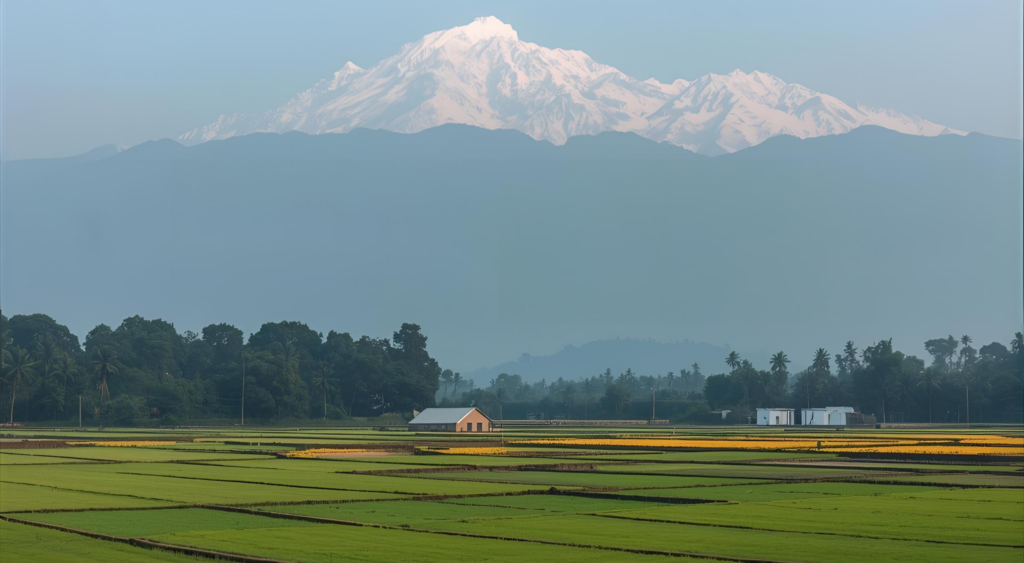
The Green Revolution of the 1960s and 1970s brought improved seeds, chemical fertilizers and irrigation systems. However, unlike India and other countries, Nepal could not fully benefit from it due to weak infrastructure and policy gaps.
3. Current Status of Nepal’s Agri-Food System
Nepal’s agriculture is still dominated by smallholder farmers with an average landholding size of 0.6 hectares. Most farming is subsistence-based, meaning farmers grow for family consumption, with little surplus for markets.
Major Crops:
- Rice: Staple food, covering 1.5 million hectares.
- Maize: Second most important crop, grown in hills and mid-hills.
- Wheat: Increasing in Terai, around 700,000 hectares.
- Pulses & Lentils: Nepal is among the top 10 exporters of lentils worldwide.
- Fruits & Vegetables: Rising demand for citrus, apples, tomatoes and green vegetables.
Livestock and Dairy:
- Nepal has over 7.4 million cattle and 5.5 million buffaloes.
- Dairy contributes 9% of agricultural GDP.
- Poultry is growing rapidly, supplying meat and eggs to urban markets.
Food Imports vs. Exports:
Despite being an agrarian country, Nepal imports large amounts of food.
- In FY 2022/23, Nepal imported over NPR 400 billion worth of food items, including rice, fruits and processed foods.
- Agricultural exports, mainly cardamom, ginger, lentils and tea accounted for only about NPR 60 billion.
This imbalance shows the weakness of Nepal’s agri-food system, high potential, but underutilized.
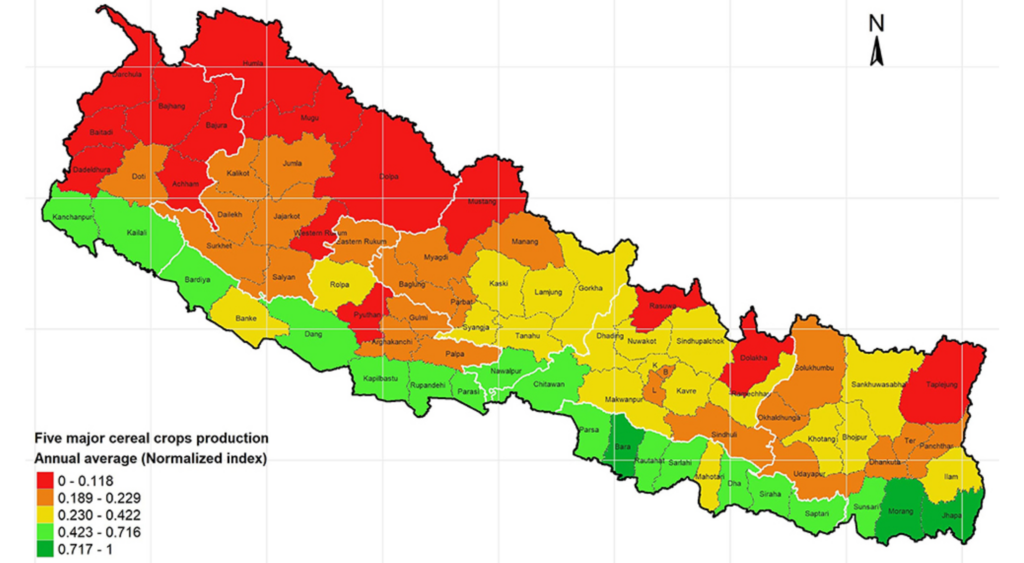
4. Challenges in Nepal’s Agri-Food System
- Fragmented Landholdings: Most farmers own very small plots, making large-scale farming and mechanization difficult.
- Low Productivity: Yields of rice, maize, and wheat in Nepal are lower than South Asian averages due to outdated farming methods and limited irrigation.
- Climate Change: Unpredictable monsoons, floods, and droughts are increasing risks for farmers.
- Lack of Infrastructure: Poor storage, transport, and processing facilities cause 30-40% post-harvest losses in fruits and vegetables.
- Market Access: Farmers often face middlemen exploitation and do not receive fair prices.
- Youth Migration: Every year, thousands of young people migrate abroad for jobs, leaving behind aging farmers.
5. Opportunities in Nepal’s Agri-Food System
- High-Value Crops: Nepal can expand production of high-value crops like cardamom, ginger, turmeric and tea, which already have strong international demand.
- Organic and Niche Products: Nepali farmers can capture global markets with organic honey, coffee and Himalayan herbs.
- Agribusiness and Food Processing: Currently, only a small percentage of crops are processed. More food processing industries can add value and create jobs.
- Dairy and Poultry Expansion: Rising demand in urban centers makes dairy and poultry profitable sectors.
- Digital Agriculture: Smart farming, mobile apps for weather forecasts, and e-markets are slowly changing how farmers connect to markets.
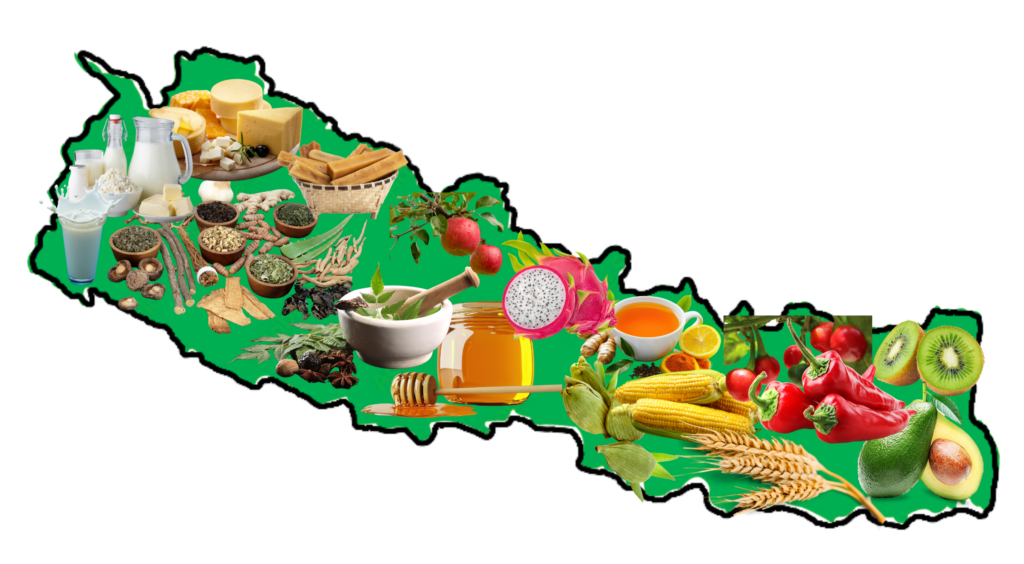
6. Role of Government and Policy
The Government of Nepal has introduced several programs to support the agri-food system:
- Prime Minister Agriculture Modernization Project (PMAMP): Focused on increasing productivity with pocket, block and zone approaches.
- Subsidies on fertilizers and seeds: Although still inadequate.
- Nepal Trade Integration Strategy (NTIS): Identified ginger, cardamom, tea and honey as priority export items.
- National Food and Nutrition Security Plan: To ensure balanced diets for all citizens.
However, weak implementation and corruption often reduce the impact of these programs.
7. Nepal’s Agri-Food Exports: The Global Market
Nepali products are gaining recognition abroad:
- Large Cardamom: Nepal is the world’s largest producer, mainly exported to India, Pakistan and the Middle East.
- Ginger: Exported to India, Bangladesh and Japan.
- Tea: Orthodox tea is becoming popular in Europe and the U.S.
- Coffee: Small but growing export, mainly to Japan, South Korea and European countries.
If value chains are improved, Nepal could increase agricultural exports by 3 – 5 times in the next decade.
8. Nutrition and Food Security
Even though Nepal grows enough food in aggregate, distribution is unequal.
- Food insecure households: Around 4.6 million people (WFP, 2023).
- Child malnutrition: 27% of children under five are stunted.
- Nutrition education and diversified diets remain key challenges.
A well-functioning agri-food system can directly improve nutrition by making healthy food accessible and affordable.
9. The Way Forward
To make Nepal’s agri-food system stronger and sustainable, these steps are essential:
- Modernize Farming: Promote mechanization, irrigation and high-yield seeds.
- Promote Agribusiness: Support food processing, cold chains and exports.
- Youth Engagement: Encourage youth entrepreneurs in agriculture with finance and technology.
- Climate-Smart Agriculture: Promote crops resilient to droughts and floods.
- Market Linkages: Establish cooperatives and digital platforms to connect farmers directly to buyers.
Research & Innovation: Invest in agricultural universities, R&D and partnerships.
Conclusion
Nepal’s agri-food system holds enormous potential. With its diverse geography, unique crops and hardworking farmers, Nepal can not only feed its own population but also become a strong player in global food markets.
Yes, the challenges are real, small landholdings, low productivity, climate change and weak infrastructure. But with smart policies, private investment and youth led innovation, Nepal’s agriculture can transform into a profitable, sustainable and competitive sector.
The future of Nepal’s agri-food system is not just about food – it’s about jobs, exports, nutrition and national prosperity.


